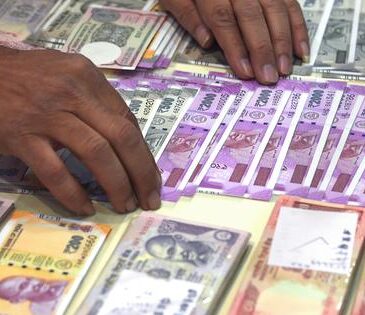After Trump on Wednesday unveiled a raft of punishing “Liberation Day” tariffs, stock futures tumbled. The U.S. dollar whipsawed against major currencies.
This highlights the confusion that has overtaken Wall Street regarding how to trade the U.S. currency. Most analysts have insisted that tariffs should push it up, reflecting how potential fewer purchases of overseas goods would narrow the trade deficit and mechanically reduce U.S. demand for foreign exchange. Also, U.S. growth is outpacing the eurozone’s, which has historically been dollar-positive.
Yet this isn’t how it has played out so far. The WSJ Dollar Index, an indicator based on a basket of currencies, has now lost more than 4% this year and is essentially back to where it was on Nov. 5, before its postelection rally. And speculators have swung to betting heavily against the U.S. currency, Commodity Futures Trading Commission derivatives data shows.

View Full Image

View Full Image
The sudden unwind can’t truly be about tariffs increasing the risk of recession. The dollar usually strengthens during busts as well as booms because investors seek refuge in it—creating the famous “dollar smile.”
Why did the market get it wrong? Perhaps the greenback is at such expensive inflation-adjusted levels that it was primed to fall. Or, as some investors argue, U.S. economic aggression against allies is eroding the dollar’s “global reserve” status.
The latter would be a win for the administration. In 2024, Trump’s chief economic adviser, Stephen Miran, stressed the need to tackle the trade deficit by penalizing foreign central banks and treasurers for parking assets in the U.S. This is in line with the view that haven demand overvalues the dollar and places an “exorbitant burden” upon the American economy.
It lacks empirical support, though, since higher official foreign purchasestend to coincide with a weaker dollar. Global dollar reserves have flatlined since 2018 as the dollar rose 16%, per International Monetary Fund figures.
A better answer, which is less flattering for Trump, is that faith in the U.S.’s long-term economic potential is fading.

View Full Image
Currency traders can be short-term chasers of bond-yield differentials. Over five-year periods, however, the difference in return-on-equity between U.S. and European stocks has shown a 70% correlation to dollar-euro moves since 2001.
This suggests a good chunk of dollar strength is due to investments that track relative growth in economic productivity—largely driven by Silicon Valley raking in huge profits and turning the U.S. into a massive exporter of technology goods and, especially, services.
Markets might now be anticipating another structural shift. A rearmament push is fueling hopes of an economic revival in Europe, just as the U.S. growth story becomes tainted by protectionism and Chinese artificial-intelligence challengers.
Of course, China’s rise itself underscores that the textbook case for free trade is flawed, and that the U.S. government should arguably also try to promote key industries. Offshoring to cut costs has often harmed workers, created fragile supply chains and made firms less eager to innovate. Troubled industrial giants such as Intel and Boeing can attest to that.
The problem is that Trump’s tariffs have been sudden and erratic. They are probably denting corporate investment rather than inducing companies to relocate production through a targeted and phased-in approach. More than Asia’s development miracles, these policies resemble Latin America’s flawed experiments with “import substitution.”
Yes, there could be benefits to General Motors and Ford reshoring assembly jobs from Mexico. But doing the same with all auto parts—including low-value components such as textiles and wiring harnesses—would just make the U.S. car industry very inefficient. This comes atop likely retaliation by trade partners and the 100% tariffs on Chinese electric vehicles inherited from the Biden era.
U.S. carmakers excel in the truck and SUV segments, where American consumers are particularly discerning. But they struggle to produce cars under $25,000, even before tariffs. Tesla, too, is a luxury brand.
If the U.S. market becomes isolated, foreign firms such as Toyota and Hyundai, which dominate budget models, may innovate less in their U.S. plants than abroad.
This is what happened to Brazil and Argentina, because their attempts to build a homegrown auto industry shielded companies from outside competition between the 1950s and 1980s. And it stands in contrast to how Japan, South Korea and China created world-class automakers by combining protectionism with the discipline of foreign markets.
Focusing too much on trade deficits overlooks the fact that the competitiveness and profitability of American tradable products have played a key role in determining the dollar’s value. Right now, they are coming into question.
Write to Jon Sindreu at jon.sindreu@wsj.com




